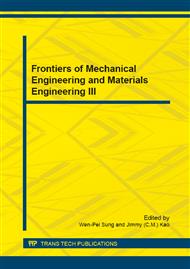p.859
p.863
p.867
p.872
p.876
p.880
p.884
p.888
p.892
Fault Diagnosis Simulation of a Space Propulsion System Based on Fuzzy Rule Set Neural Network Method
Abstract:
Based on fuzzy rule sets match method which is a series of fuzzy neural networks, a system framework used for the fault diagnosis is proposed. This fault diagnosis system consists of five parts, including the extraction of fuzzy rules, fuzzy reference rule sets, the fuzzy rule scheduled to detect, the fuzzy match module and the diagnosis logic module. The extraction of fuzzy rules involves two steps: step one adaptively divides the whole space of the trained data into the subspaces in the form of hypersphere, which is expected efficiently to work out the recognition questions in the high dimension space; step two generates a fuzzy rule in each sample subspace and calculates the membership degree of each fuzzy rule. Many fuzzy reference rule sets are produced by the extraction module of fuzzy rules for the offline learning, and a fuzzy rule set to be detected is online formed while the monitoring process is happening. Beliefs estimated from the fuzzy match process of fuzzy rule sets, which indicate the existence of the working classes in the plant, the diagnosis logic module can export fault detection time, fault isolation time, fault type and fault degree. The simulation researches of the fault diagnosis in space propulsion system demonstrate the superior qualities of the fault diagnosis method on the basis of the fuzzy match of the fuzzy rule sets.
Info:
Periodical:
Pages:
876-879
Citation:
Online since:
January 2015
Authors:
Keywords:
Price:
Сopyright:
© 2015 Trans Tech Publications Ltd. All Rights Reserved
Share:
Citation:


